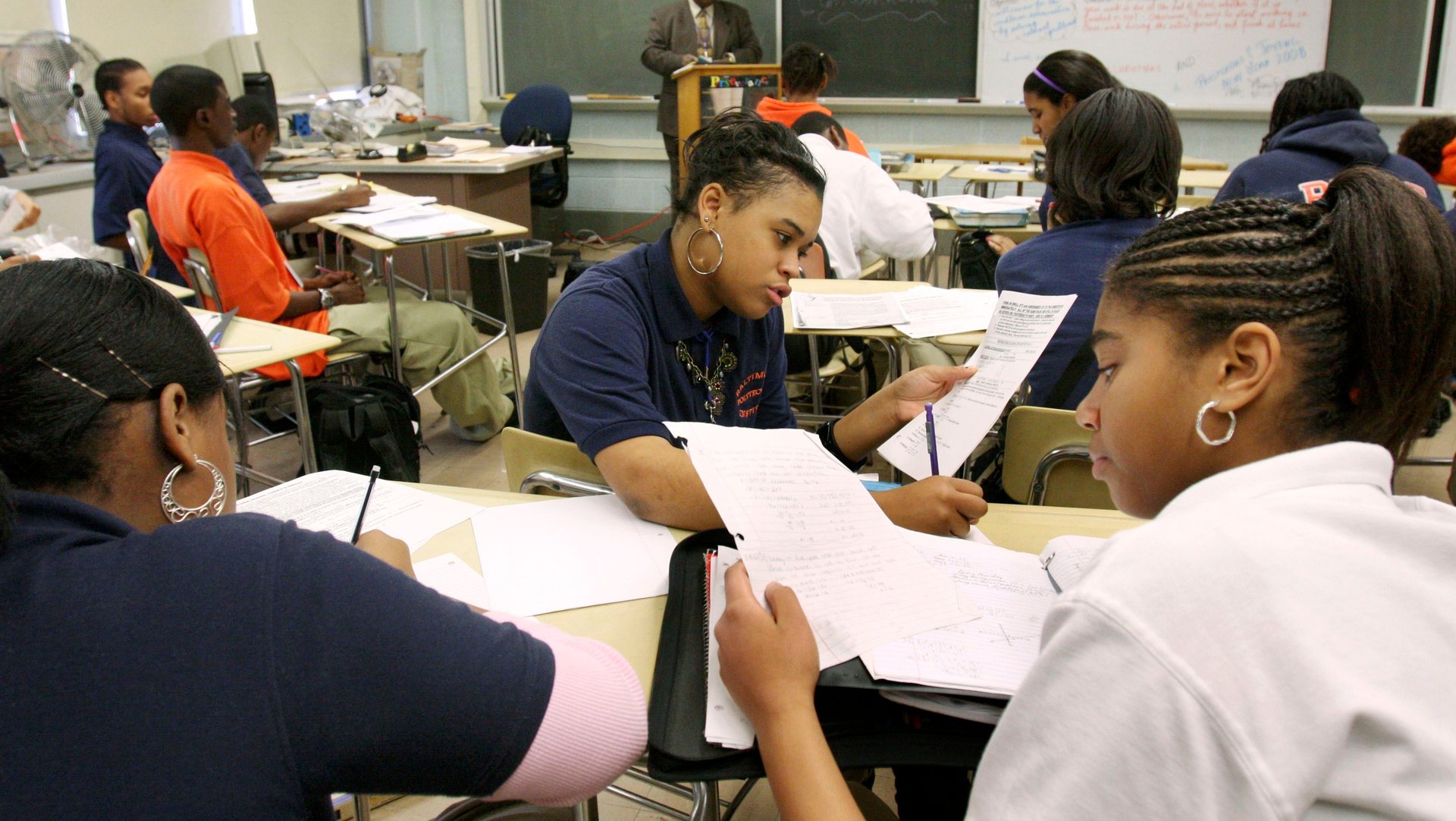Affirmative action incentives can improve student performance long before college
Much of the discussion around affirmative action—the practice of giving preference to underrepresented racial groups in college admissions—centers around the effect the policy has on universities and students after admission. Now a working study from the US National Bureau of Economic Research suggests kids at a disadvantage might achieve better results at a young age if they know there’s a greater chance of a reward for their group.


Much of the discussion around affirmative action—the practice of giving preference to underrepresented racial groups in college admissions—centers around the effect the policy has on universities and students after admission. Now a working study from the US National Bureau of Economic Research suggests kids at a disadvantage might achieve better results at a young age if they know there’s a greater chance of a reward for their group.
The researchers offered money to 992 fifth- through eighth-grade students in Utah, depending on their performance in a national math exam. They first split the Utah students into groups—in one, fifth and sixth graders competed against each other, and seventh and eighth graders did as well. The kids who did the best were rewarded with money, regardless of how much math education they’d had. In the second group, the researchers took the educational level into account—all the students took the same test, but were only measured against others in their own grade.
Thus, the researchers mimicked the affirmative action system—the kids with the advantage were the sixth and eighth grade students, who had more math education, while the fifth and seventh graders were the students who would benefit from a quota or affirmative action.
All the students were given access to a study website, and researchers observed the amount of time that each group spent.
Some of the results:
-The students in the quota group were 75% more likely to visit the website than the ones in the “color-blind” group, and they spent more time on it, looking at different subjects and trying more questions.
-The quota students logged 57% more time on the site and attempted 70% more questions.
-The fifth and seventh graders in the quota group also raised their scores by an average of 0.624 points on the test compared to the previous year. (The score is the number of correct answers out of 25).
One of the arguments against affirmative action is that increasing incentives for one demographic group might decrease performance for another group. But in the quota group, the fifth and seventh grade students narrowed the median achievement gap to almost zero, without significantly affecting the study habits performance of the sixth and eighth graders.
These students did not represent the actual cultural diversity of the US, and a cash prize is a much more immediate incentive for a kid than the possibility of going to college some time in the distant future. But what the study does demonstrate is that to understand the full effects of affirmative action, it’s a good idea to start with improvement that could come before college.